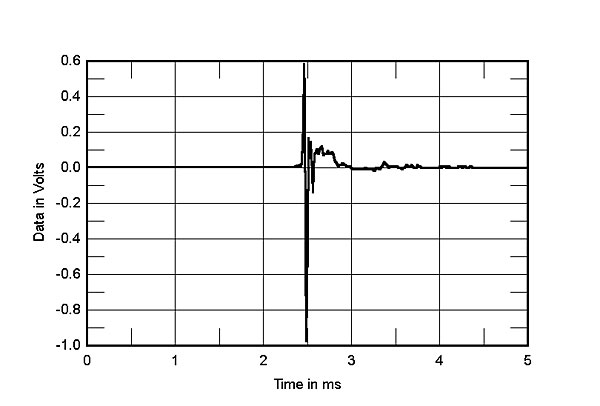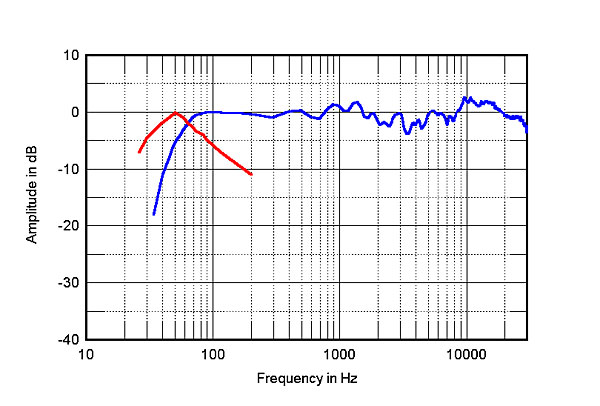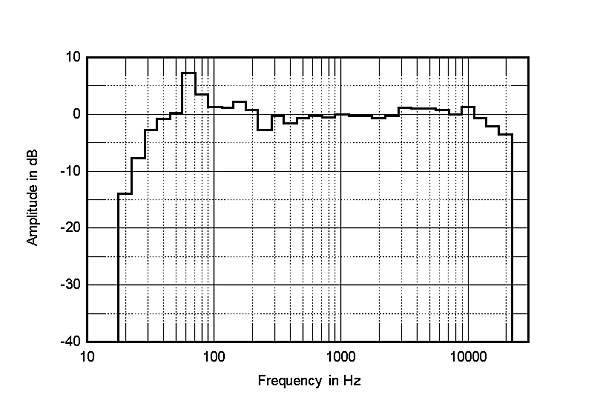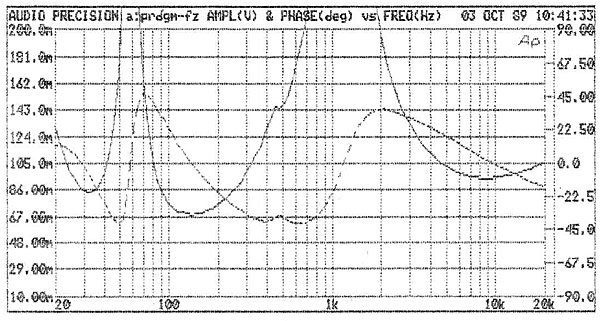| Columns Retired Columns & Blogs |
I too believe in, "...the single-speaker dem." But alas, I have 12 pairs and live in a little leafy leanto lol
I use a mixture of nearfield, in-room, and quasi-anechoic FFT techniques to investigate possible objective factors that might explain the sound heard. Readers wanting more detail on this regime should read pp.166–167 in the October 1989 issue (Vol.12 No.10).
Fig.1 shows the Control Monitor's response to the rectangular test pulse on the tweeter axis with the grille removed. Both drive-units appear to be connected with the same polarity; ie, they both start moving forward in response to the positive voltage spike. The initial short-risetime pulse is from the tweeter, which leads the woofer in time on this axis, but note that it appears to have a greater degree of undershoot on the negative side of the time axis than its initial positive-going rise, something I haven't seen before when both units appear to have the same polarity.

Repeating this measurement over a ±15° lateral window and averaging the resultant FFT-derived responses gives the curve shown in fig.2. The midband and treble are reasonably smooth, though too much energy is present in the top audio octave. With the grille on, a significant suckout between 4 and 7kHz appears in this response, although the top-octave peak is then reduced in level. Fig.2 also shows the nearfield response of the woofer, this 6dB down at 48Hz, not taking the contribution of the port into account.

At the listening position (fig.3, where the effect of LF standing-waves in the room has been minimized by spatial averaging), these quasi-anechoic measurements translate to a balance with an excess of upper-bass energy, though there is useful output down to 30Hz at moderate listening levels. The midrange and treble balance is again very smooth, though a slight energy lack around the crossover region is followed by what is too much tweeter energy. Personally, I would have gone for a slightly less sensitive tweeter setting on the calibration control. I am sure that this tweeter balance, coupled, again, with a slight peak centered on the 12.5kHz 1/3-octave band, correlates with the "somewhat cold" subjective balance noted.

The Control Monitor's impedance (fig.4, plotted with a scaling of 1.9 ohms/vertical division) drops to a minimum of 6.8 ohms in the upper bass and 9 ohms in the treble, suggesting that the speaker will present no drive problems to inexpensive amplifiers. The dimple in the impedance amplitude and phase curves at 460Hz is also present when just the woofer is measured; it is probably due to a resonance of some sort—remember that I noted a strong cabinet sidewall mode in this region—and might correlate with the subjective "thickening" in the midband.—John Atkinson


I've had my Paradigms for at least 25 years, replaced the tweeter and woofer on both the only thing original is the crossover and cabinets, they're shuffled back and forth from garage to backyard. Not a speaker to be used for critical listening more for convenience as they're a solid box that can take the constant movement

I have Paradigm Studio Monitor 30s, they too like many other minimonitors exhibit a bass hump, this is intentional, when the speaker is located a quarter wavelength (at the hump center frequency) from a rear wall the bass hump disappears. This is due to the interaction between the forward wave and reflected wave from the rear wall. Bringing the speaker out into the room also helps imaging too. Hope this helps.